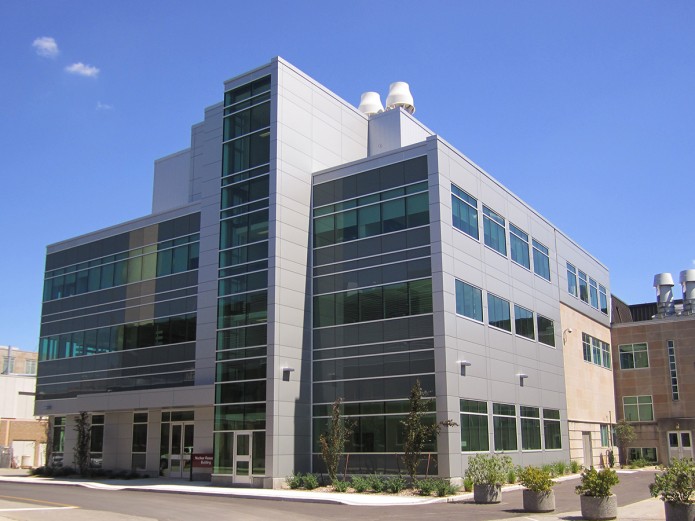
Constructing Facilities with High Electromagnetic Fields and Radioactivity
Many of the most advanced research and healthcare facilities in use today involve the use of strong electromagnetic fields, which require special expertise during their design and construction.
Cyclotrons that manufacture cancer-fighting radioisotopes, powerful electron microscopes, and “Hot Cells” that contain radioactive materials plucked from nuclear reactors all present unique challenges pertaining to budgeting, scheduling, and safety. The following is a brief look at how some of these challenges are addressed during design and construction.
Electromagnetic (EM) Fields
Electricity and magnetism are related phenomena that occur due to subatomic particles like protons and electrons. In many cases, they can be beneficial and helpful, but when dealing with strong EM fields, special care must be taken.
For example, a Magnetic Resonance Imaging (MRI) machine uses an electromagnet to expose the human body to extremely powerful magnetic fields which affect bone tissue and organ tissues in different ways. This allows doctors to produce highly detailed images of patients in order to identify and diagnose health concerns. Although the MRI is an essential diagnostic tool in modern medicine, the electromagnetic fields are so powerful that they can be dangerous if metal is present.
When constructing an MRI facility, non-magnetic materials like brass, aluminum, and concrete must be used. In addition, shielding must be built into the walls using a special type of steel (‘electrical steel’ or ‘silicon steel’) to prevent the magnetic fields from affecting facilities located outside of the room. In addition, any rebar used must be made of GFRP Rebar, or Glass-Fiber Reinforced Polymer.
Radiation
The scientific understanding of radioactivity was developed throughout the 1900’s, and has many modern applications such as nuclear power or medical radioisotopes. There are several different types of radiation – although some radiation is harmful, most types of radiation people are exposed to are not (for example, bananas emit harmless radiation due to the Potassium they contain).
Isotopes of certain elements, such as Technetium-99m, release radiation that can damage cells and tissues in living organisms. However, in the hands of medical professionals, a small dose of Technetium-99m is an extremely effective imaging tool that doctors can use in diagnostic tests, such as a thyroid imaging procedure.

Millions of doses of Technetium-99m are administered to patients each year, which makes the demand for the isotope extremely high. Recently, a Canadian team of researchers developed a way to manufacture the isotope without the use of a nuclear reactor. Instead, a particle accelerator like a cyclotron can be used, which requires a unique facility due to the radiation involved.

In addition to magnetic shielding, care must be taken to contain all radiation to the cyclotron itself. Walls made out of several feet of concrete, along with lead shielding, are two of the most effective materials to absorb the radiation generated during the production of Technetium-99m.

Ira McDonald Construction has constructed two cyclotron facilities so far – at McMaster University and the Toronto General Hospital. However, there are many facilities that involve the use of radiation, such as the McMaster Nuclear Reactor and Post-Irradiation Examination facilities. All of these projects require a high degree of co-ordination throughout the construction process – architects, engineers, owners, and construction managers all have a role to play in making complex projects a success.
A full list of Ira McDonald Construction’s specialized facility experience is available here; Specialized Construction Experience (Right-Click and ‘Save As’).
For More Information, Contact:
Ron Worrall, Dipl.T.Arch, G.S.C, LEED AP
Director of Operations
ron@iramcdonald.com
905-297-4653 x16
